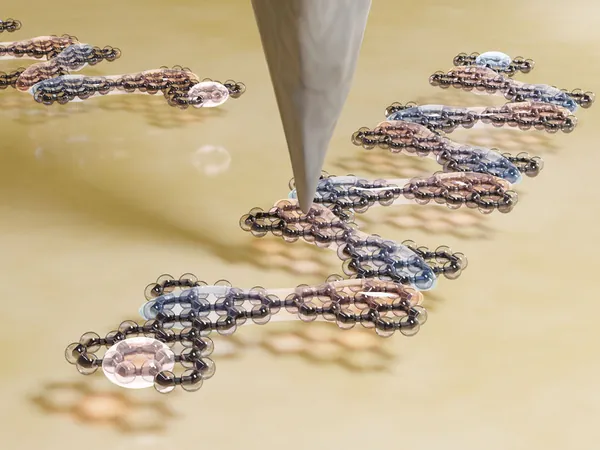
Breakthrough in Quantum Computing: Researchers Successfully Recreate Fundamental Quantum Model with Nanographenes!
2024-11-04
Author: Olivia
In an exciting development for the future of quantum computing, a team of researchers from Empa, alongside experts from the International Iberian Nanotechnology Laboratory and the Technical University of Dresden, has successfully recreated a fundamental quantum model using nanographenes. This innovative achievement could pave the way for revolutionary advancements in quantum technology!
At the heart of quantum computing is the qubit—akin to a classical bit but with extraordinary capabilities. While classical bits operate as binary states (1 or 0), qubits can exist in a state of superposition, representing both 1 and 0 simultaneously. This property has the potential to enable quantum computers to perform tasks at lightning speeds compared to today’s most advanced supercomputers.
However, achieving effective qubit communication has been an ongoing challenge due to the complexity of quantum interactions. The researchers tackled this issue by harnessing the unique properties of electron spins, which serve as the foundation for qubit functionality. Each electron spin can point "up" (1) or "down" (0) and can be linked to influence its neighboring spins, creating a quantum chain.
The Empa team focused on the one-dimensional alternating Heisenberg model—conceptualized nearly a century ago by Nobel laureate Werner Heisenberg. This theoretical model outlines a chain of spins interacting with one another, a principle that had previously faced obstacles in practical implementation.
To bring this theory to life, researchers utilized Clar's Goblet, a nanographene molecule resembling an hourglass constructed from eleven carbon rings. This structure allows for the creation of chains of spins, where the internal spins of a molecule are weakly linked while the spins across molecules are strongly connected. Remarkably, the team succeeded in fabricating these chains on a gold surface, demonstrating precise control over the spins, including the ability to toggle individual spins on and off.
The implications of this breakthrough are enormous. As Roman Fasel, head of Empa's nanotech@surfaces laboratory, puts it, “Our work demonstrates that theoretical quantum physics can be realized with nanographenes to experimentally validate complex predictions.” Furthermore, this study serves as a foundation for future experiments that can explore even more intricate quantum systems.
The collaboration illustrates the importance of interdisciplinary research, with chemists providing essential materials and theoretical scientists guiding the experimental work. This united front aims to not only understand quantum mechanics but to translate its principles into practical applications that could transform computing, cryptography, and much more.
This is just the beginning! With ongoing research, the team is poised to unlock further mysteries of quantum systems, potentially leading to the next generation of quantum computers that could solve problems we once thought unsolvable. Follow along as this thrilling journey into the quantum realm unfolds!









 Brasil (PT)
Brasil (PT)
 Canada (EN)
Canada (EN)
 Chile (ES)
Chile (ES)
 España (ES)
España (ES)
 France (FR)
France (FR)
 Hong Kong (EN)
Hong Kong (EN)
 Italia (IT)
Italia (IT)
 日本 (JA)
日本 (JA)
 Magyarország (HU)
Magyarország (HU)
 Norge (NO)
Norge (NO)
 Polska (PL)
Polska (PL)
 Schweiz (DE)
Schweiz (DE)
 Singapore (EN)
Singapore (EN)
 Sverige (SV)
Sverige (SV)
 Suomi (FI)
Suomi (FI)
 Türkiye (TR)
Türkiye (TR)